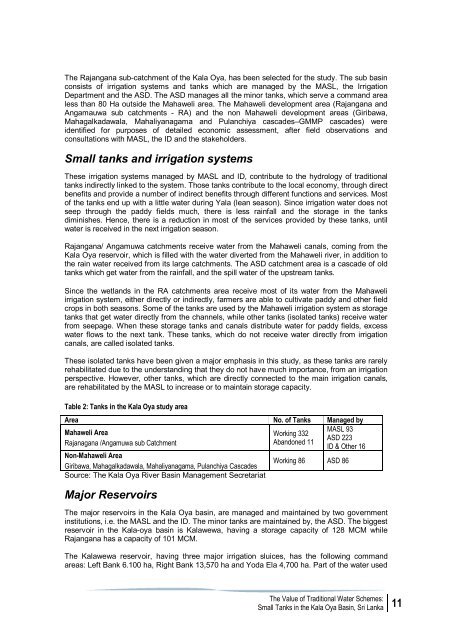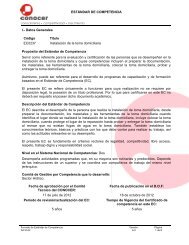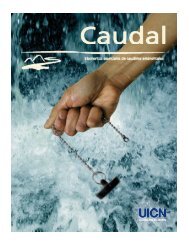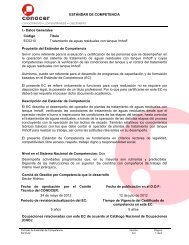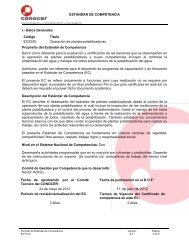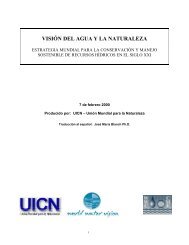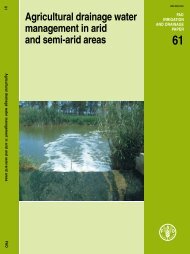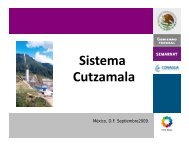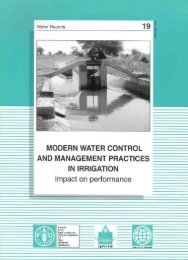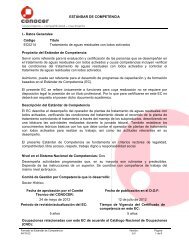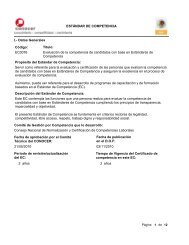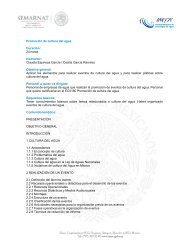Document - IUCN
Document - IUCN
Document - IUCN
Create successful ePaper yourself
Turn your PDF publications into a flip-book with our unique Google optimized e-Paper software.
The Rajangana sub-catchment of the Kala Oya, has been selected for the study. The sub basinconsists of irrigation systems and tanks which are managed by the MASL, the IrrigationDepartment and the ASD. The ASD manages all the minor tanks, which serve a command arealess than 80 Ha outside the Mahaweli area. The Mahaweli development area (Rajangana andAngamauwa sub catchments - RA) and the non Mahaweli development areas (Giribawa,Mahagalkadawala, Mahaliyanagama and Pulanchiya cascades–GMMP cascades) wereidentified for purposes of detailed economic assessment, after field observations andconsultations with MASL, the ID and the stakeholders.Small tanks and irrigation systemsThese irrigation systems managed by MASL and ID, contribute to the hydrology of traditionaltanks indirectly linked to the system. Those tanks contribute to the local economy, through directbenefits and provide a number of indirect benefits through different functions and services. Mostof the tanks end up with a little water during Yala (lean season). Since irrigation water does notseep through the paddy fields much, there is less rainfall and the storage in the tanksdiminishes. Hence, there is a reduction in most of the services provided by these tanks, untilwater is received in the next irrigation season.Rajangana/ Angamuwa catchments receive water from the Mahaweli canals, coming from theKala Oya reservoir, which is filled with the water diverted from the Mahaweli river, in addition tothe rain water received from its large catchments. The ASD catchment area is a cascade of oldtanks which get water from the rainfall, and the spill water of the upstream tanks.Since the wetlands in the RA catchments area receive most of its water from the Mahaweliirrigation system, either directly or indirectly, farmers are able to cultivate paddy and other fieldcrops in both seasons. Some of the tanks are used by the Mahaweli irrigation system as storagetanks that get water directly from the channels, while other tanks (isolated tanks) receive waterfrom seepage. When these storage tanks and canals distribute water for paddy fields, excesswater flows to the next tank. These tanks, which do not receive water directly from irrigationcanals, are called isolated tanks.These isolated tanks have been given a major emphasis in this study, as these tanks are rarelyrehabilitated due to the understanding that they do not have much importance, from an irrigationperspective. However, other tanks, which are directly connected to the main irrigation canals,are rehabilitated by the MASL to increase or to maintain storage capacity.Table 2: Tanks in the Kala Oya study areaArea No. of Tanks Managed byMahaweli AreaMASL 93Working 332ASD 223Rajanagana /Angamuwa sub CatchmentAbandoned 11ID & Other 16Non-Mahaweli AreaGiribawa, Mahagalkadawala, Mahaliyanagama, Pulanchiya CascadesWorking 86 ASD 86Source: The Kala Oya River Basin Management SecretariatMajor ReservoirsThe major reservoirs in the Kala Oya basin, are managed and maintained by two governmentinstitutions, i.e. the MASL and the ID. The minor tanks are maintained by, the ASD. The biggestreservoir in the Kala-oya basin is Kalawewa, having a storage capacity of 128 MCM whileRajangana has a capacity of 101 MCM.The Kalawewa reservoir, having three major irrigation sluices, has the following commandareas: Left Bank 6.100 ha, Right Bank 13,570 ha and Yoda Ela 4,700 ha. Part of the water usedThe Value of Traditional Water Schemes:Small Tanks in the Kala Oya Basin, Sri Lanka11


